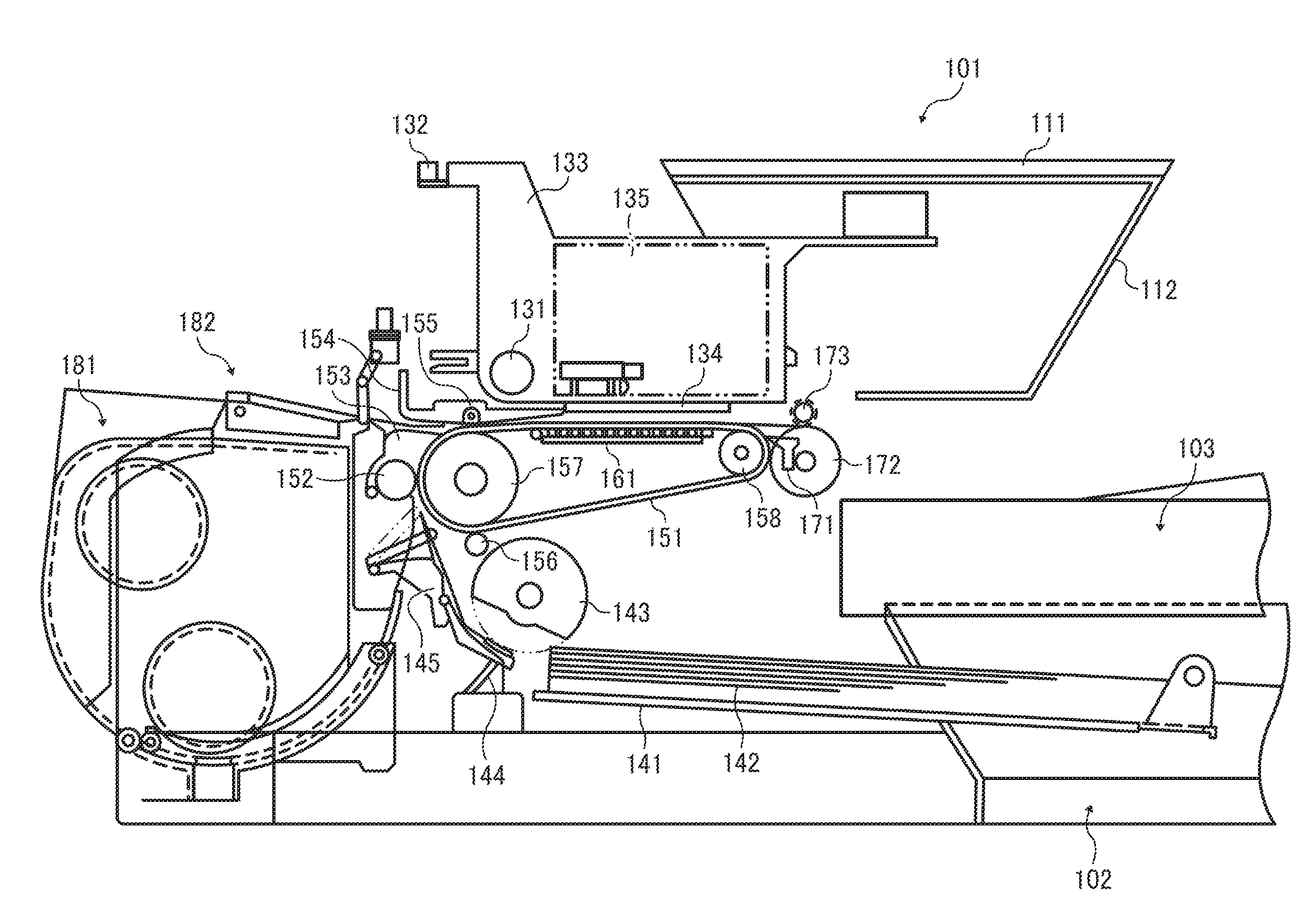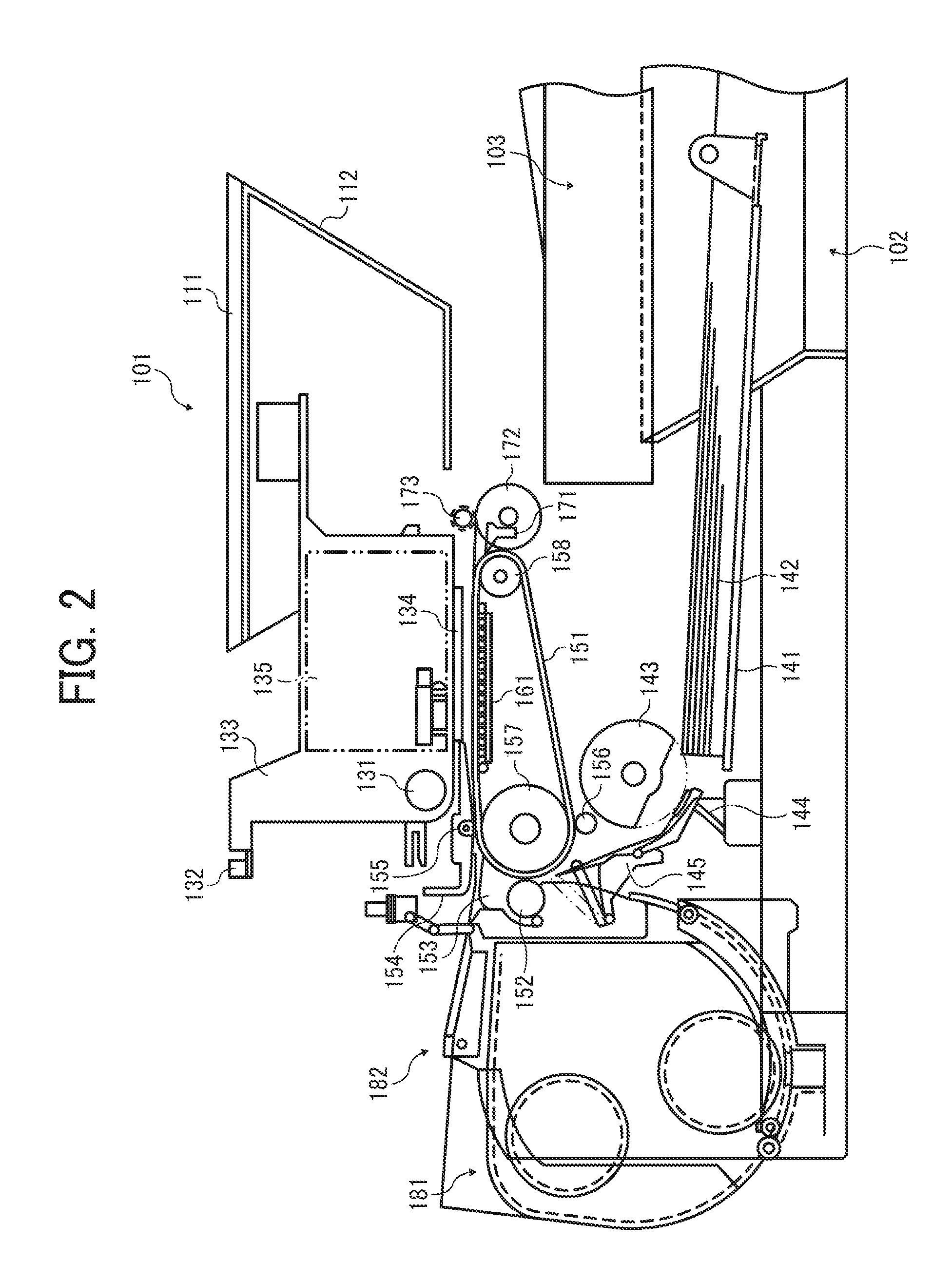Ink composition, ink cartridge, ink recording device, and recorded matter
- Summary
- Abstract
- Description
- Claims
- Application Information
AI Technical Summary
Benefits of technology
Problems solved by technology
Method used
Image
Examples
synthesis example a
Synthesis of Polymer a
[0173]20.0. parts of the monomer represented by chemical formula 2-2 and 113.0 parts of ethanol were placed in a flask followed by stirring to obtain a uniform solution. After nitrogen was blown into this solution for 30 minutes, 1.33 parts of azobis isobutylonitrile was added thereto at 65° C. to conduct polymerization reaction for 4 hours. A viscous material obtained by removing the solvent from the thus-obtained liquid polymerization using an evaporator was added to acetone to retrieve a solid material. While diluting the thus-obtained solid material (polymer) with water, sodium hydroxide was added followed by three-day dialysis membrane refinement to achieve 100% acid neutralization. Thereafter, the concentration of the resultant was adjusted with water in such a manner that the concentration of the solid portion was 10% by weight. As a result, Polymer a was synthesized, in which the diphosphonic acid group was 100% neutralized. The weight average molecular...
synthesis example b
Synthesis of Polymer b
[0174]8.0 parts of the monomer represented by Chemical formula 2-2, 12.0 parts of the monomer represented by Chemical formula 3-2, and 113.0 parts of ethanol were placed in a flask followed by stirring to obtain a uniform solution. After nitrogen was blown into this solution for 30 minutes, 1.33 parts of azobis isobutylonitrile was added thereto at 75° C. to conduct polymerization reaction for 3 hours. A viscous material obtained by removing the solvent from the thus-obtained liquid polymerization using an evaporator was added to acetone to retrieve a solid material. While diluting the thus-obtained Polymer b with water, sodium hydroxide was added followed by three-day dialysis membrane refinement to achieve 100% acid neutralization. Thereafter, the concentration of the resultant was adjusted with water in such a manner that the concentration of the solid portion was 10% by weight. As a result, Polymer b was synthesized, in which the diphosphonic acid group was...
synthesis example c
Synthesis of Polymer c
[0175]8.0 parts of the monomer represented by Chemical formula 2-2, 12.0 parts of the monomer represented by Chemical formula 4-2, and 113.0 parts of ethanol were placed in a flask followed by stirring to obtain a uniform solution. After nitrogen was blown into this solution for 30 minutes, 1.33 parts of azobis isobutylonitrile was added thereto at 65° C. to conduct polymerization reaction for 5 hours. A viscous material obtained by removing the solvent from the thus-obtained liquid polymerization using an evaporator was added to acetone to retrieve a solid material. While diluting the thus-obtained Polymer c with water, diethylmethyl amine was added followed by three-day dialysis membrane refinement to achieve 100% acid neutralization. Thereafter, the concentration of the resultant was adjusted with water in such a manner that the concentration of the solid portion was 10% by weight. As a result, Polymer c was synthesized, in which a diphosphonic acid group wa...
PUM
| Property | Measurement | Unit |
|---|---|---|
| Percent by mass | aaaaa | aaaaa |
| Percent by mass | aaaaa | aaaaa |
| Angle | aaaaa | aaaaa |
Abstract
Description
Claims
Application Information
 Login to View More
Login to View More - R&D
- Intellectual Property
- Life Sciences
- Materials
- Tech Scout
- Unparalleled Data Quality
- Higher Quality Content
- 60% Fewer Hallucinations
Browse by: Latest US Patents, China's latest patents, Technical Efficacy Thesaurus, Application Domain, Technology Topic, Popular Technical Reports.
© 2025 PatSnap. All rights reserved.Legal|Privacy policy|Modern Slavery Act Transparency Statement|Sitemap|About US| Contact US: help@patsnap.com



